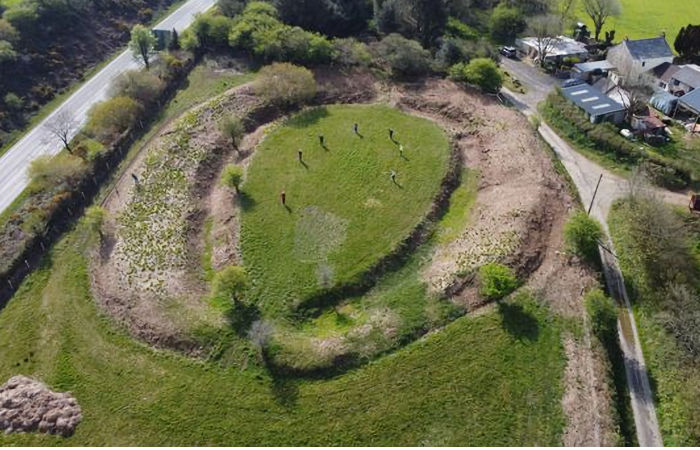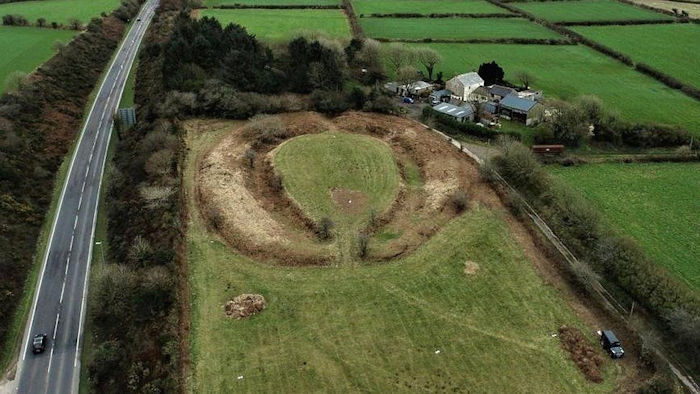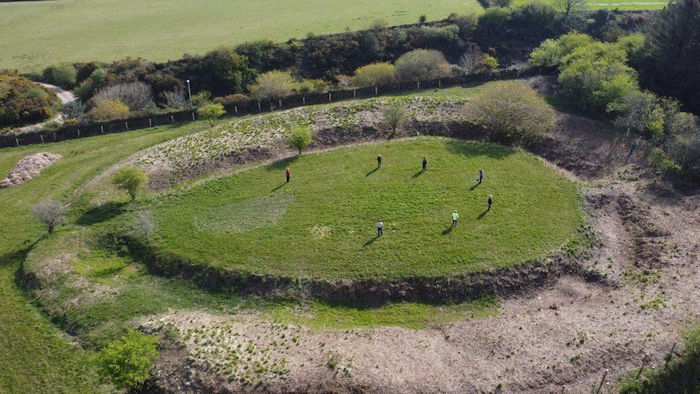Conny Waters – AncientPages.com – During an archaeological survey of Castilly Henge, near Bodmin scientists uncovered a previously unknown stone circle inside a Cornwall scheduled monument.
The remarkable and interesting structure is 225ft long by 205ft wide (68m by 62m). It was constructed during the late Neolithic period (circa 3,000 to 2,500 BC), forming an amphitheater-like setting for gatherings and ritual activities.

Credit: Historic England/Cornwall Archaeological Unit
Previous researchers have suggested that the site was used as a theatre (Playing Place or plen-an-guary) in the Middle Ages, and then as a battery during the English Civil War.
The Neolithic circle was found by researchers from Historic England and the Cornwall Archaeology Unit (CAU) with help of ground-penetrating radar and earth resistance techniques, and using small electric currents pᴀssed through the ground.
“The opportunity to apply modern survey methods to this intriguing monument arose in 2021 when it was included in a Monument Management Scheme (MMS), a partnership between Historic England and the CAU to conserve and repair monuments on Historic England’s Heritage at Risk Register.
Volunteers coordinated by the CAU cleared the site of vegetation which threatened below-ground archaeological deposits. This work enabled teams from Historic England to carry out the first detailed topographic and geophysical surveys of Castilly Henge.
The surveys, which will be detailed in a Historic England report released later this year, revealed traces of a long-buried stone circle in the center of the henge and detailed information about the henge’s original form and its modification over time. This is only the second henge with a stone circle discovered in Cornwall, ” Cornwall Live reports.

Credit: Historic England/Cornwall Archaeological Unit
“The research at Castilly Henge has given us a deeper understanding of the complexity of this site and its importance to Cornish history over thousands of years. It will help us make decisions about the way the monument is managed and presented, so that it can be enjoyed by generations to come,” said Ann Preston-Jones, heritage at risk project officer at Historic England.
“The help of the local volunteers has been invaluable in removing the bracken and scrub obscuring the henge. Over the winter, thirteen people gave 111 hours of their time and now the monument is looking so much better. The project has also re-fenced the field and the farmer is happy to start grazing again, improving the long term management of this amazing archaeological site,” Peter Dudley, senior archaeologist at Cornwall Archaeological Unit said.

Credit: Historic England/Cornwall Archaeological Unit
Castilly Henge is on Historic England’s Heritage at Risk Register because its location makes it difficult to look after, and, as a result, the earthworks and part of the interior were heavily overgrown with bracken. As part of the MMS, volunteers have removed the bracken and other damaging vegetation from the monument making it visible in the landscape again.
Historic England said no further work was planned on the site, but its research was to be published in a report later this year.
Written by Conny Waters – AncientPages.com Staff Writer





